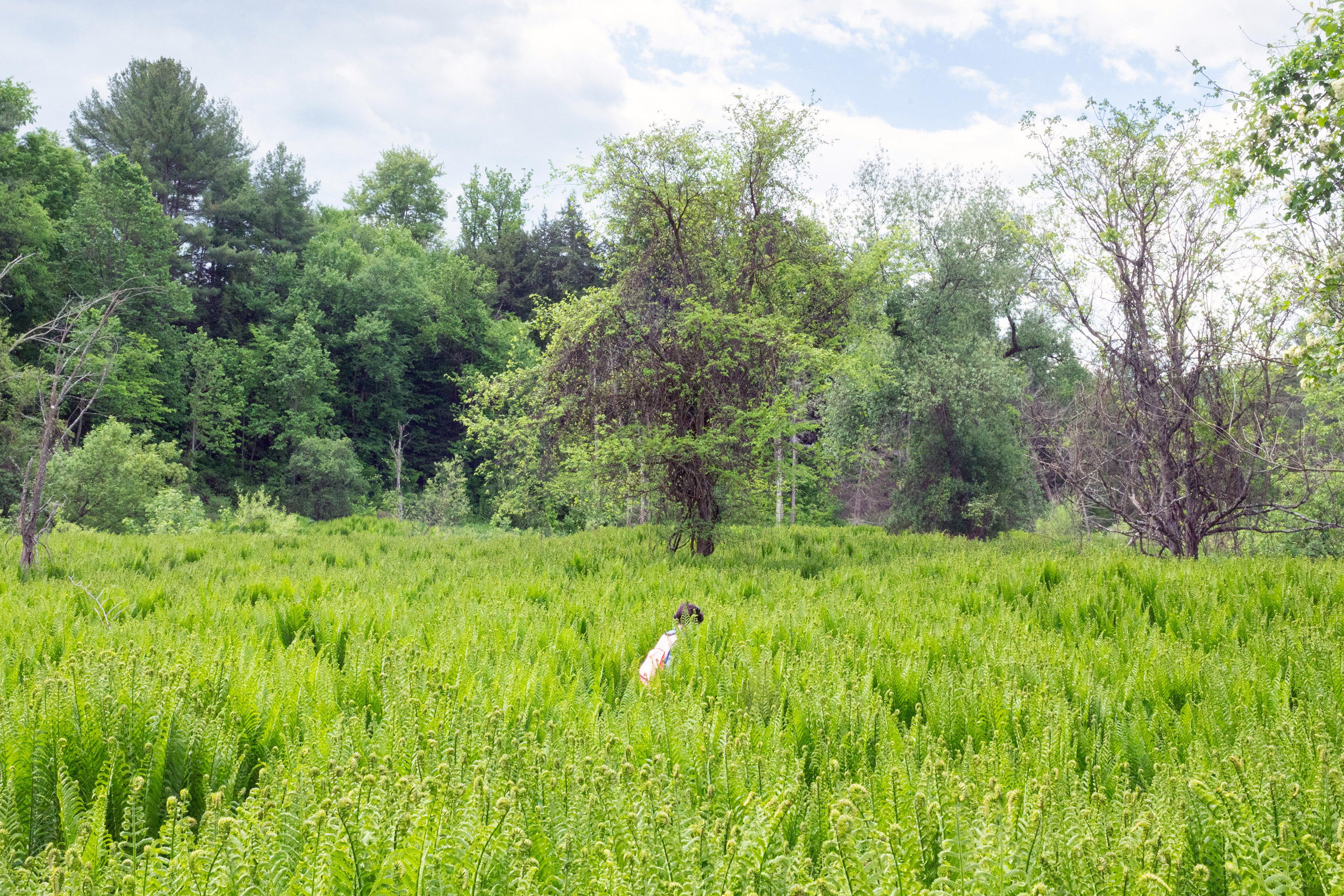Plant Detective
Vermont State Botanist Grace Glynn ’14 is on the hunt for rare and endangered plants.
For those who rarely search for anything beyond a misplaced set of keys or a cellphone, the life of a botanist might look impossibly poetic: combing through fields of wildflowers or perusing mossy riverbanks in search of elusive plants with names like handsome sedge and rough false pennyroyal.
The whimsical image fit when the state of Vermont announced last month that a plant thought to be locally extinct—false mermaid-weed—had been found through a chain of events that seemed stolen from a fairy tale.
It began with a sharp-eyed turtle biologist for the state, Molly Parren. She had been out surveying the habitat of wood turtles in rural Addison County on May 7 when she spotted some wild meadow garlic, which is extremely rare, beside a stream. Parren snapped a photo and sent it to her colleague, Grace Glynn ’14, Vermont’s state botanist.
But when Glynn opened the photo, another plant, visible in the foreground, seized her attention. She knew at once what it was: Floerkea proserpinacoides, or false mermaid-weed, an herb that had not been documented in Vermont for more than a century, and one that Glynn had sought in vain for years.
She called Parren right away. “You won’t believe what you just found!” she told her. Then Glynn called her friend Matt Charpentier, a field botanist in Massachusetts who had helped her look for false mermaid-weed in Vermont in recent years while pursuing a similar search in Massachusetts.
“She said ‘Are you sitting down?’ and immediately I knew she’d found Floerkea,” he said of the phone call. “It was the right time of year.”
(An “excitable person” by his own admission, Charpentier said he once became so fired up after hearing that an endangered plant had been located—American chaffseed, rediscovered on Cape Cod in 2018—that he backed into another car in a parking lot.)
“There was a lot of screaming,” Glynn acknowledged of her own reaction when she noticed the Floerkea in the photo.


